Divine Feminine Greek Pilgrimage
February 11 – 18, 2024
8 Days – SOLD OUT
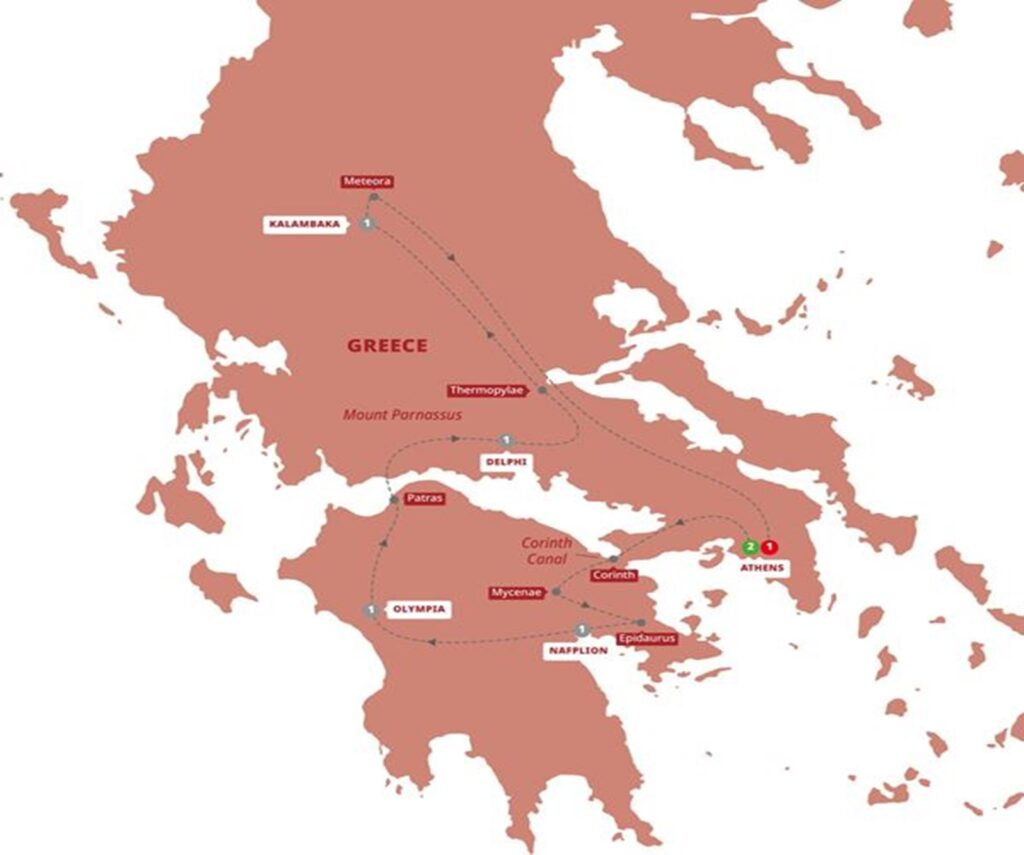

Inquiry – contact us at contact@cabiz.net
This is our Divine Feminine Greek Tour in a 5-part Divine Adventure tour series. Take all tours or just this one.
DAY 1 Feb 11
Athens, Plaka, Metropolis Square
Holy Metropolitan Church of the Annunciation of the Virgin Mary

Check in to our conveniently located Adrian Hotel in Plaka next to the Acropolis with excitement and anticipation of our visit of the ancient capital of Greece and model for democracy, civilization and spirituality.
Meet in the afternoon and begin commemorate the divine feminine and Divine Mother, by visiting historic churches of the Assumption, Gabriel’s announcement of Her divine pregnancy and Annunciation of Her Divine immortallity.

These churches display divine images or statues of the Divine Mother at the entryway or somewhere in the church. The Divine Mother awakens the soul and protects you and your soul while in the church. Don’t enter any church that doesn’t honor the Divine Feminine connection to the soul, the Divine Mother.
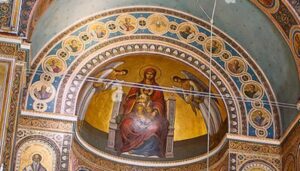 We’ll see the Holy Metropolitan Church of the Annunciation of the Virgin Mary in Metropolis Square where you can see an impressive fresco of the Divine Mother located in the Prothesis over the altar, refer left.
We’ll see the Holy Metropolitan Church of the Annunciation of the Virgin Mary in Metropolis Square where you can see an impressive fresco of the Divine Mother located in the Prothesis over the altar, refer left.
Make your soul’s connection and prepare for divine mystical experiences during our Divine adventure.
You can lite a candle for a loved one and/or in reverence to the Divine Mother.

In August, especially on August 15, all over Greece there are festivals to commemorate the Divine Mother, or Panagia. The 15th is a public holiday in Greece and around the world. Christian Orthodoxy marks it as one of their most important days of the year. It’s a time during which they examine their beliefs and understandings of the Divine Mother’s story, such as her death, Assumption & Divine immortality, and ressurrection. Learn more about the Feastival of Assumption.
Many Christians believe the Divine Mother resurrected after her transfiguration on the 3rd day and that she’s divine and immortal.
And in 1950, the pope declared the Assumption or Divine immortality of Mary to be “divinely revealed dogma: that the Immaculate Mother of God, the ever Virgin Mary, having completed the course of her earthly life, was assumed body and soul into heavenly glory” (No. 44).
Christian orthodox churches traditionally honor the divine Mother.
We’ll return to our hotel for a celebration dinner and celebrate our new adventure together.
Overnight: Adrian Athens Hotel – Athens
Meal: Dinner
Day 2 Feb 12
Athen, Acropolis
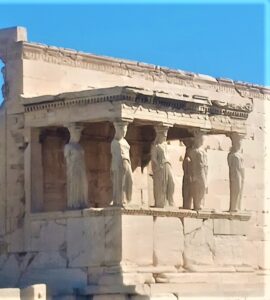 After breakfast,
After breakfast,  we’ll walk to the Acropolis where we’ll see the crowning glory of the Acropolis, the Temple of Athena (on the left), the ancient architectural masterpiece built during the Golden Age of Athens, over 2500 years ago. And there’s that Parthenon (on the right) that stands as one of the most revered and recognized sites in the world.
we’ll walk to the Acropolis where we’ll see the crowning glory of the Acropolis, the Temple of Athena (on the left), the ancient architectural masterpiece built during the Golden Age of Athens, over 2500 years ago. And there’s that Parthenon (on the right) that stands as one of the most revered and recognized sites in the world.
Later we’ll have some free time until we meet for dinner.
Take an aftternoon stroll through the lively Plaka area, the oldest section of Athens, a neighborhood of charming restaurants, shops and sidewalk cafes.
You might catch a glimpse of the colorfully-costumed Evzone guards, outfitted in the traditional Greek style, on Constitution Square.
In the evening, we’ll visit one of the most popular fish-tavernas in the area and have a Greek fish-seafood dinner.
We’ll return safely to our hotel for a good nights sleep.
Overnight: Adrian Athens Hotel – Athens
Meals: Breakfast, Dinner
Day 3 Feb 13
Corinth, Mycenae and Nafplion
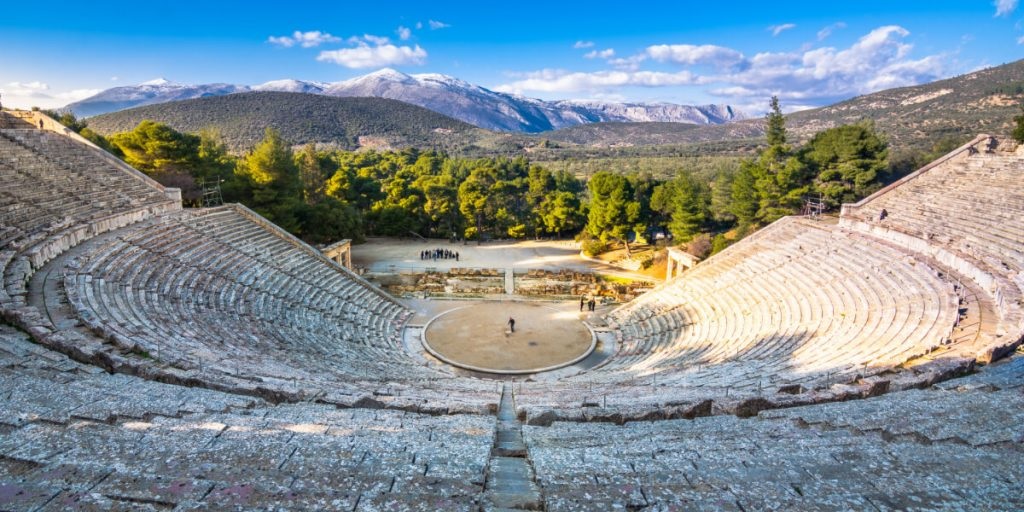
We’ll depart Athens this morning, crossing the mighty Corinth Canal to the wild Peloponnesian Peninsula. Arriving in Corinth, we’ll explore an ancient city that several empires fought over throughout the centuries. We’ll continue to Mycenae, a mighty kingdom of Ancient Greece, where we’ll see the Beehive Tombs (the Treasury of Atreus), the Lion Gate and the remains of Agamemnon’s Royal Palace.
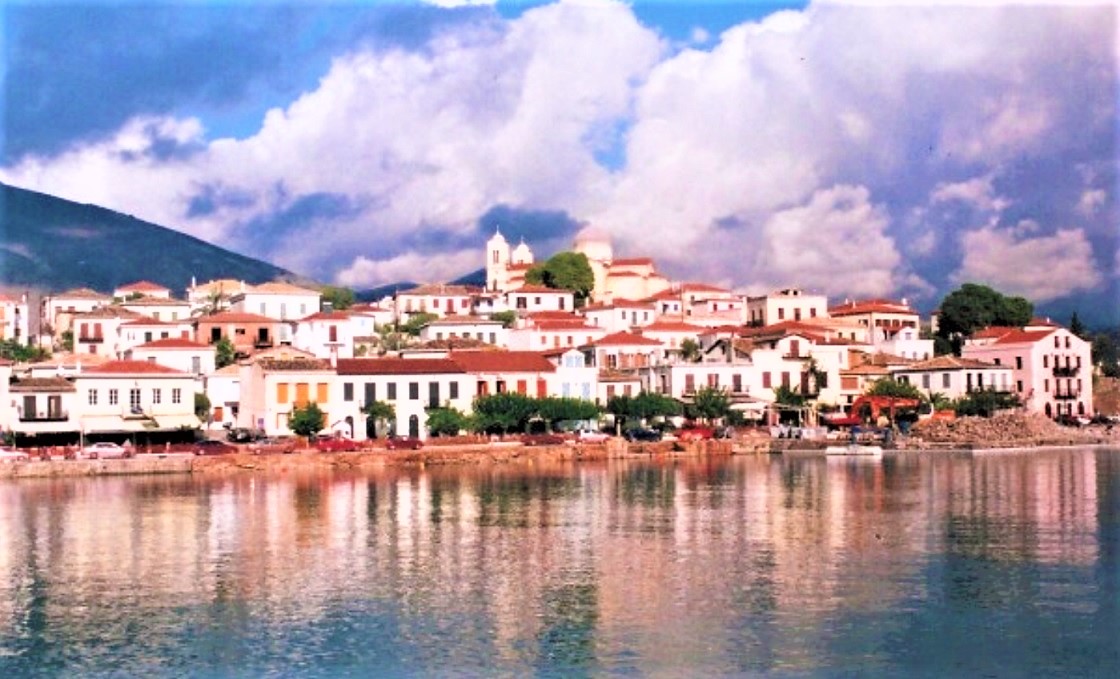
We’ll travel to Epidaurus to visit the ancient theatre, the best-preserved Ancient Greek theater in the world and view the Sanctuary of Asclepius, the God of Medicine, whose snake-entwined staff remains the symbol of medicine to this day. The Epidaurus is a remarkable testament to the healing cults of the ancient world and the emergence of scientific medicine.
We’ll arrive in the Nafplion a picturesque seaport of Nafplio in the historic Argolis area of Greece.
We’ll check into the Nafsimedon Hotel, a 4 star hotel in Nafplio with a spa.
The rest of the day is at your leisure. Enjoy the comfortable hotel and explore the nearby beaches Arvanitia Beach is a 7 minute walk. The National Gallery and Archeological Museum are nearby.
Nafplio is the first capital of Greece. Nafplio remained the capital of the kingdom until 1834, when King Otto decided to move the capital to Athens. It’s one of the most romantic towns with stone pathways and many coffee shops and restaurants with traditional tastes.
In the evening, we’ll dine nearby.
Overnight: Nafsimedon Hotel, Nafplio
Meals: Breakfast, Dinner
Day 4 Feb 14
Olympia, Ancient Olympic Site
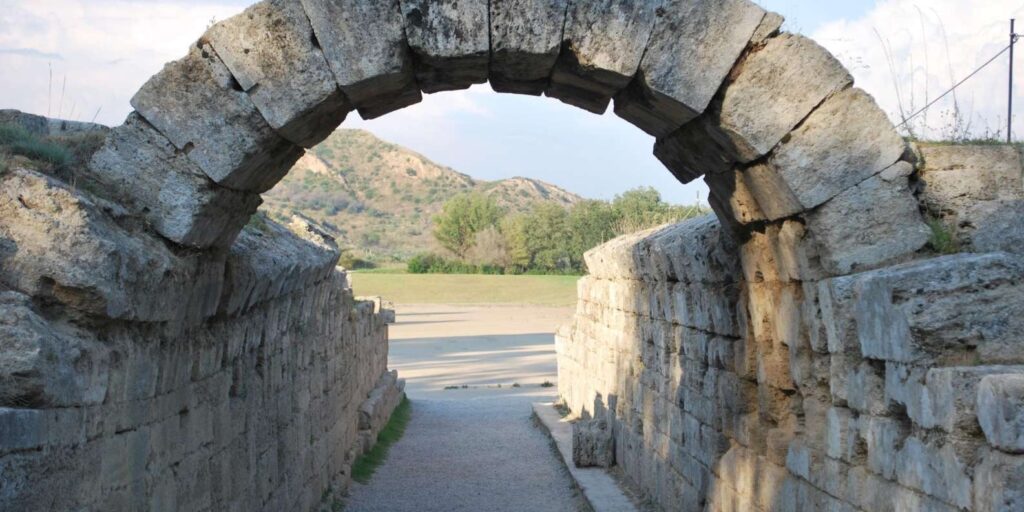
We traverse the Mountains of Arcadia to ancient Olympia. And check into our Hotel Inomaos.
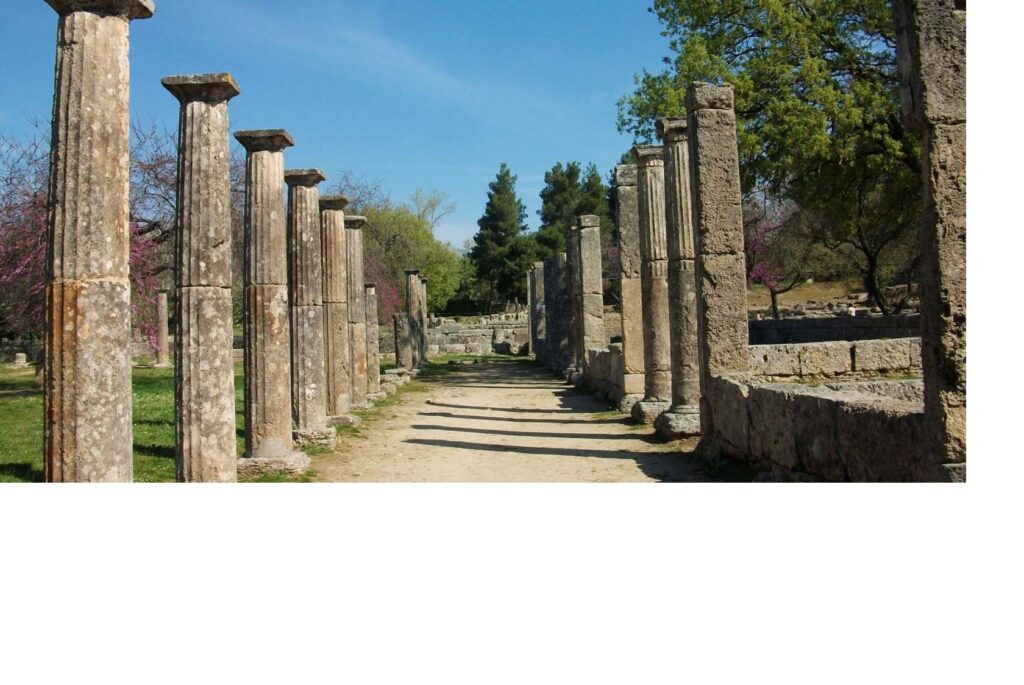
We’ll delve into centuries of Olympic history. We’ll visit the ancient Olympic site, including the Sanctuary of Olympian Zeus, Temples of Zeus and Hera, and the ancient stadium where the Olympic Games were first held in 776 B.C.
We’ll visit a local store, where we’ll have a chance to taste local olive oil and spices.
This evening, we’ll enjoy dinning in Olympia with live entertainment.
Overnight: Hotel Inomaos, Olympia
MEALS: Breakfast, Dinner
Day 5 Feb 15
Delphi, Temple of Apollo
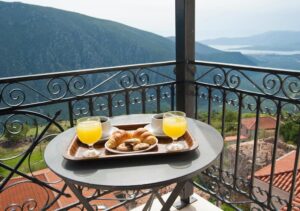
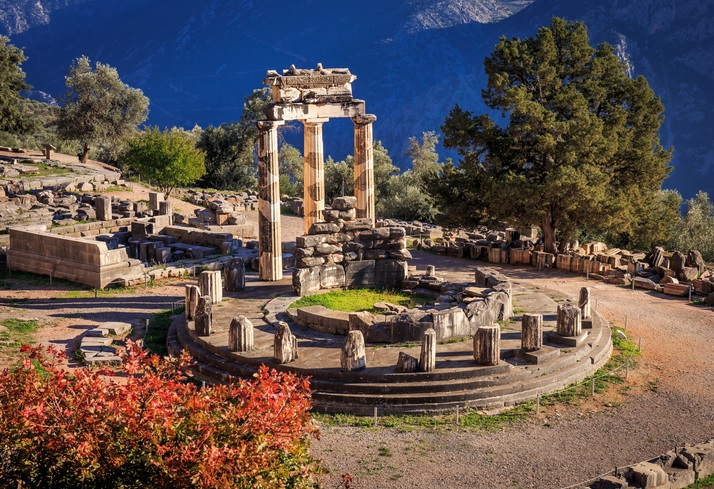
After breakfast we’ll leave Olympia, skirt the coastline north to Patras, crossing the Gulf of Corinth to mainland Greece and travel to Delphi and check into our 3 star hotel with a great view, the Pan Hotel.
We’ll tour the imposing 4th century B.C. Delphi that was a powerful home of the oracle. And it was called Omphalos of the world, the spiritual and religious centre of the ancient world which is situated in a uniquely beautiful location, perched on the slopes of Mount Parnassos, and declared a UNESCO World Heritage Site.
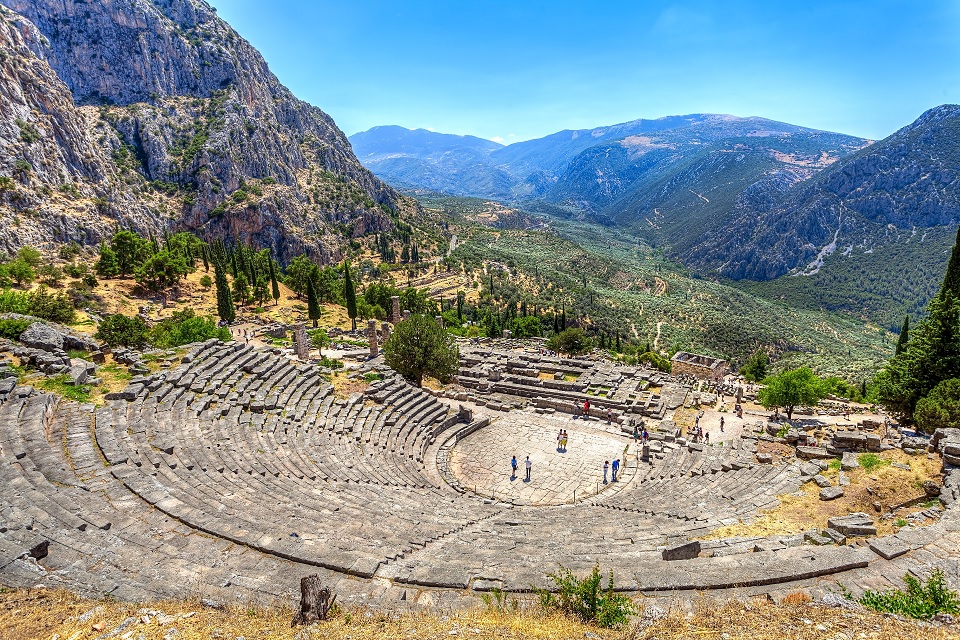
Tread in the footsteps of the ancient Greeks, who would descend on the sanctuary of Delphi to consult with the most important oracle in the classical world and walk the Sacred Way to the 4th-century Temple of Apollo. You’ll have time to go the museum on your own and view the statues immortalising the strength of the athletes who once competed in the Pythian Games, held in honour of Apollo and the Arts.
We’ll return to our hotel for liesure time and where you can enjoy the great view from your hotel room.
You’ll have a good nights rest after we dined together, in the evening.
Overnight: Delphi – Pan Hotel – Your room has a sea view
Meals: Breakfast, Dinner
Day 6 Feb 16
Kalambaka & Meteora – Monasteries Tour
After breakfast a scenic drive brings us to Thermopylae, famous for the heroic defence by Leonidas and his brave Spartans against the invading
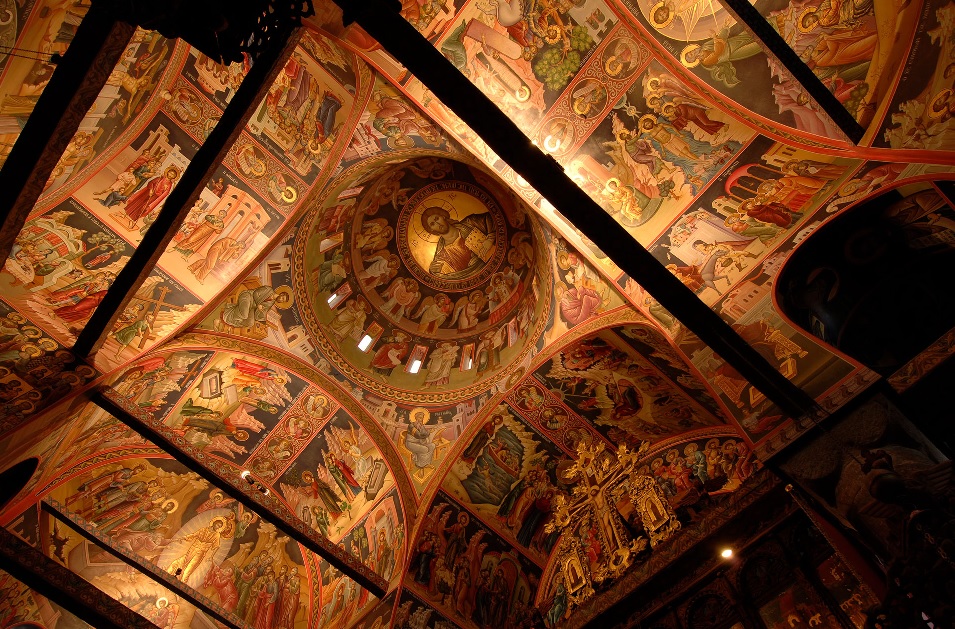
Persians. We cross the lush Thessaly region, the ‘breadbasket of Greece’, then travel over the Pourmaraki Pass to Kalambaka. And we’ll check into our 4-star family-friendly hotel near Kalambaka Tourist Information Center where your room will have a view of Meteora.
Then we’re off to see Meteora meaning “suspended in the air”, and tour 2 out of 6 mystical Christian Orthodox monasteries incredibly nestled securely on the edge of extraordinary rock formations.
Along with Roman Catholicism and Protestantism, Greek Orthodox Christianity is one of the world’s three major Christian traditions. But unlike the other two large branches of Christianity, which have spread throughout the developing world, Eastern Orthodoxy remains largely confined to Europe. There’s also Oriental and Russian Orthodoxy in Asia. The total number of Orthodox is estimated at about 300 million members. The basis of the original Orthodox community is the Creed of Constantinople, written in 381.
The Meteora monastaries are holy places and some have a dress code as follows: Women wear skirts below the knees or bring a large scarf that will cover your knees. Men wear long pants and jacket to cover arms.
Most of the Meteora monasteries were built in the 1500’s and then added to over the centuries.
We’ll see the Monastery of St Stephen, one of the more easily accessible of the monasteries, built in the late 12th century.
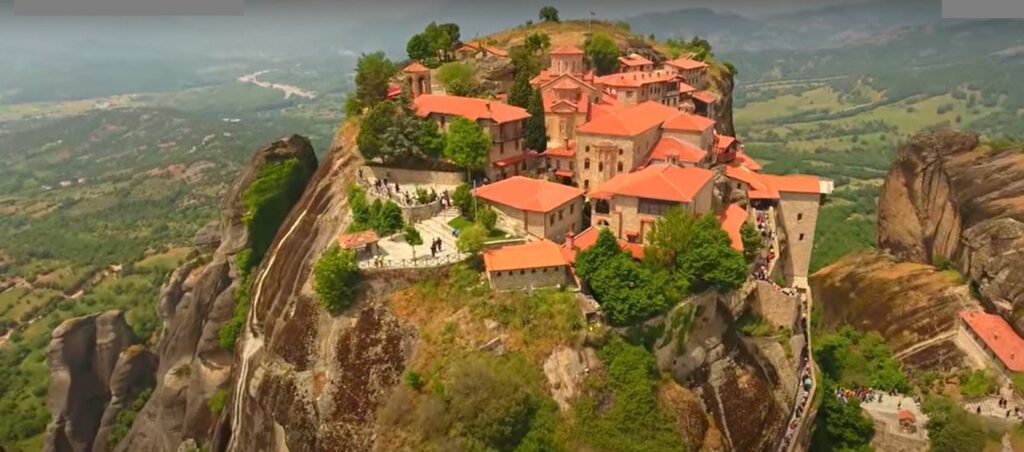
This monastery has been restored numerous times and added to until it’s current form as a nunnery since 1961 and where the sisterhood of nuns are known for their remarkable social action.
Meteora is a monastic site that is increasingly gaining significance as a World Heritage site, as a tourist destination and as functioning “living sites of the present” influenced by wider changing circumstances which is a new approach from “monuments of the past” approach. Living sites: the past in the present approach.
The “living sites” approach concentrates on communities as the creators of the sites, viewing communities and sites as an inseparable entity. The ultimate aim is to shift the focus of conservation from ‘protection’ towards a continual process of ‘creation’ in an ongoing present, attempting to change the way heritage is perceived, protected and, more importantly, further created with spiritual and construction works stemming from the divine and their representatives, i.e., the divine ‘Ministry of Spirituality and Culture’.
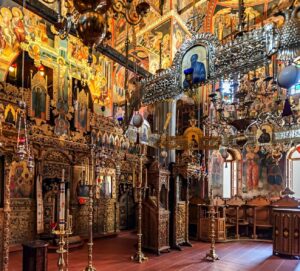
Next, we’ll seethe Great Meteoron Monastery that is the largest, oldest and best known monastery in Meteora where there’s housing for Christian monks. Most of the Meteora monasteries were built in the 1500’s and then added to over the centuries.
Also called Megalo Meteoro or Metamorphisis, the first church of the Transfiguration of the Savior was built in the 14th century upon the highest rock.
At the sanctum of the catholic there are important frescos of the Macedonian school and the remarkable frescos of the main church and the narthex are believed to be created by Georgie, student of Theophanous the Cretan.
There is the chapel of the divine Mother of God (Virgin Mary of the Meteorite Stone). Some other important buildings at the centre are the kitchen, and dining hall, called the “trapeza”.
Then, we’ll return to our beautiful hotel for freetime and for dinner in the evening.
Overnight:Davani Meteora Hotel, Kalambaka
Meals: Breakfast, Dinner

Day 7 Feb 17
Kalambaka
We’ll eat breakfast and have a free day to relax, rejuvenate, enjoy the beautiful scenery, Kalambaka and our magnificent hotel with spa.
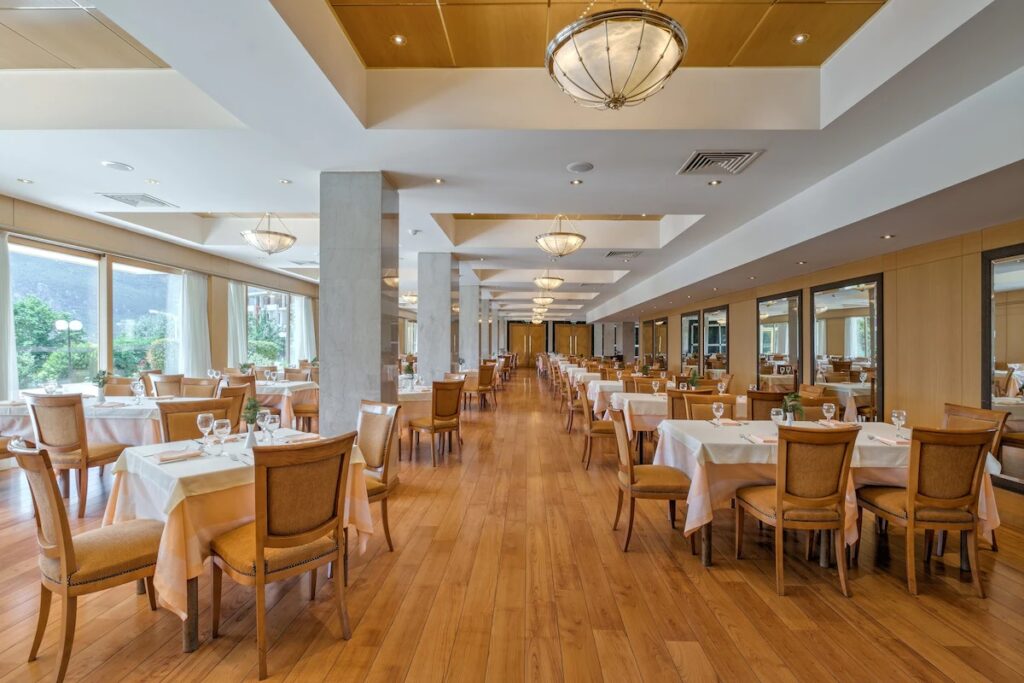
In the evening we’ll cebebrate the successful completion of our Divine Feminine Tour of Greece and exchange our sucess stories at our fabulous hotel’s dining hall.
Overnight:Davani Meteora Hotel, Kalambaka
Meals: Breakfast, Dinner
Day 8- Feb 18
After Breakfast, we’ll travel to Ioannina Airport, for transfers home or continue to Nice, France for 5 days for our next Divine adventure.
Meal: Breakfast
Tip:
Bring European electric plug adapter for your appliances.
*CTS Tours reserves the right to make changes to this tour’s itinerary, Divine Feminine Greek Pilgrimage, that will be of benefit and will insure a successful completion of the tour. CTS Tours while follow it as best it can, with possible changes in the future, in hotels and the sequencing of events or additions or subtrations of events so it will run smoothly.
CTS Tours doesn’t guarantee the accuracy of a hotel’s description in their advertisement, however, currently, CTS is satisfied that it’s done it’s best to verify the information when possible. If a hotel is changed, in the future, it will be replaced with a hotel with an equivalent number of stars or better.


